- Home
- Isaac Hooke
Alien War Trilogy 2: Zeus Page 6
Alien War Trilogy 2: Zeus Read online
Page 6
The massive vessel possessed the same dodecahedron design as the other enemy ships Rade had seen, and it was colored a midnight black against the smoke-filled sky.
One of the armored carriers split in half down the middle beside him; a long groove melted into the solar-paneled asphalt in front and behind it.
Rade suddenly understood where the runnel Harlequin had used to get in behind the enemy had come from.
“Incoming laser fire!” Snakeoil said.
Rade rolled to the ground and dove inside a nearby alleyway.
He switched to the thermal band and studied the incoming vessel. He didn’t see any obvious turrets standing out on the heat signature.
“Sky,” Rade said. “Access the visual data recorded by the platoon the last time we encountered one of these things at close range. Based on that data, extrapolate the positions of the turrets on the current attacker, then track and zoom in.”
A moment later Sky said: “I believe I have found a match. These objects correlate to the turrets you encountered in your previous mission.”
The view zoomed in. He returned to the visual band. The turrets indeed matched what he had seen before.
“Do our lasers have enough power to take that structure out at this range?” Rade asked his AI.
“I believe so,” Sky replied. “If the platoon combines its firepower.”
“Sync your cobra targeting systems with mine, people!” Rade transmitted. He pointed his laser arm at the ship and told his AI: “Sky, keep that turret in my sights.”
He switched to the POV of his laser. Sky automatically moved his arm, keeping the turret in view. Rade waited until all of the indicators on his HUD turned green, meaning the lasers of his companions were synced to his own. Even though the platoon members were distributed at different positions throughout the rubble, their arms—and the lasers therein—would be pointing at exactly the same spot he targeted.
He fired. A tiny black spot appeared at the base of the turret.
“Good hit, Rage,” Facehopper said.
He waited for the weapon to recharge, and released two more such shots in turn.
“Let’s hope that put it out of action,” Rade said.
“I’m not detecting any further emanations from that particular set of turrets,” Sky replied.
Rade nodded. “Sky, target the next turret, if you will.”
“Scanning...” the AI returned.
Tank and heavy artillery battalions from the adjacent streets abruptly joined in. Missiles roared skyward. Large-caliber rounds whizzed through the air.
“Found one,” Sky said.
Rockets and other exploding ordnance struck the ship in rapid succession. More incoming fire came in from gunships that dove past in strafing runs.
Before Rade could fire again, the enemy craft jerked to the right precariously, then crash-landed hard several streets away, in the middle of the city. The impact sent up a large plume of debris.
Rade took to a nearby rooftop, and when the dust cloud settled, he realized that the outskirts of the vessel were only two streets away. It was a miracle none of the companies were struck.
Other members of the platoon had joined him on the roof tiles.
“That was a close one,” Snakeoil said.
Thick doors abruptly folded open along the outer perimeter of the ship. They were ramps, and slammed downward into adjacent structures, crushing them. Out poured swarms of large, black creatures. The high-pitched squeals they emitted sounded part battle-cry, part screams of elation, and they made Rade’s skin crawl.
“Uh, Chief,” Bender said. “Get the major to call in the Lancers?”
Rade zoomed in. The incoming creatures were reminiscent of the hammerheads from 11-Aquarii III with their thin T-Rex-like bodies and sidewise-elongated heads capped by horned crowns. The segmented tails on these variants had even more spikes, however, as did the rest of their bodies for that matter. The four-legged creatures all had those two extra gripping arms in the middle of their torsos, underneath the protruding probosces. But those arms seemed slightly longer, and the talons sharper.
“Looks like we got hammerheads, version two,” Skullcracker said.
“Our alien enemy is ever-refining its weaponry,” Lui said. “Like human beings would do. We got that in common.”
“The question is,” Tahoe said. “Is v2 truly better than v1? Or are they all bark and no bite?”
Rade and the others launched missiles as the hordes approached, and large swaths of the hammerheads were blown apart. They switched to lasers and electrolasers when the range became too short, and at that distance were able to take out two or three enemies at a time with either weapon.
But the enemy ranks kept coming. In moments their positions were overwhelmed, rendering their weapons mostly ineffective. The platoon members were reduced to pounding and bashing, and some of them were swept off the rooftop to the street below in the process, including Rade.
Spikes readily pierced Rade’s already damaged armor, and in only a few moments he had several holes in his cockpit. The inner actuators had prevented him from receiving any bodily damage thus far, but he knew it was only a matter of time...
Around him, the armored carriers of D Company were fighting back with their own defenses. Some of the infantry had emerged from the safety of the carriers, and were firing from behind said vehicles. When the enemy hordes swept over them, those men would be lost, Rade knew. Jumpsuits couldn’t protect a man from these creatures, and the smaller combat robots would fare little better.
“Get those infantry back inside the carriers, Major!” Facehopper transmitted.
It was too late. Centurions were easily sliced in half by those sharp talons. Marines were skewered by those sharp tails.
Rade rushed to the aid of as many Marines as he could, bashing aside hammerheads left and right, and firing his rechargeable weaponry at point blank range.
“Get inside your armored carriers!” he shouted, using his external speakers—he felt he could get his point across much better that way, rather than over the crowded comm band.
Not that those who remained inside the carriers were doing much better. Several of the armored vehicles had been turned over, and the hammerheads were systematically tearing open the outer shells and pulling out Marines.
Rade beat away the hammerheads from one such carrier, and took up a guard position in front.
The Lancers finally came in on bombing runs. Thankfully the target areas were the crashed ship and its immediate vicinity: the nearby platoons were spared. The explosions tore wide swaths of destruction through the incoming ranks, and even temporarily halted the sally itself because the bombs that struck the dodecahedron unleashed an avalanche of destruction that completely sealed the vessel exits.
But while Rade and the others dealt with the surviving hammerheads, fresh members of the horde shoved aside the rubble from within; members of the swarm emerged in moments, grinding the long teeth of their proboscises, slashing the air with their talons, eager to fight.
“Damn it!” Facehopper said. “We could use some relief here, Major.”
“I’ve been in contact with headquarters,” the major returned. “Relief is coming.”
“Gather the carriers in the center of the street,” Rade sent his men. “We’ll form a defensive perimeter around them.”
Those members of Alpha who weren’t occupied went to the carriers and righted several of them. “Move to the center of the street!” Rade said.
Eventually, D Company caught on, and most of the carriers had grouped together as requested.
As the latest round of the hammerheads swept into their ranks, Rade and the others did their best to protect the carriers. Rade bashed and pounded away, unleashing cobra and zodiac when charge levels permitted it. Behind him, the armored vehicles repeatedly fired their laser turrets into the fray.
“Major,” Facehopper sent. “Now would be a good time for that relief...”
“It�
��s coming...” she replied.
Rade fought on like that for another two minutes, though it seemed an eternity. Teeth ripped holes in his cockpit. Spikes tore electrical conduits in his arms. Talons severed actuators in his legs. But he battled on.
He wasn’t sure how much more of it he could take.
Finally incoming laser fire heralded the arrival of the relief. It came from the direction of Headquarters Company.
On the overhead map, Rade saw that fifty Centurions had joined the fray.
“You call that relief?” Bender said. “Oh that’s good!” His voice oozed sarcasm.
Some of the hammerheads began breaking away to deal with the combat robots. The latter fell easily to the creatures.
But those Centurions were apparently a diversion, because as the combat units were terminated, behind them rapid-fire lasers began to eat into the swarms.
Rade saw that other robots had placed mobile M139B Minigun pulse platforms in the middle of the street. Basically the laser equivalents of heavy machine guns. The robots had placed seven in total. The weapons were designed to avoid friendly targets, while tracking and opening fire on any enemy tangos.
The M139Bs constantly adjusted their aim as they unleashed that deadly infrared barrage. The continual squeals the hammerheads made as they died were so grisly, and so loud, that Rade found himself turning down the external volume of his helmet and employing active noise canceling to block it out.
In thirty seconds the platforms began to overheat, despite the liquid cooling, and their individual firing rates were reduced to once every few seconds. By then the enemy dead had formed a thick half-circle ten meters from the platforms, about two meters deep.
The diversionary attack was enough to give Rade and the others a respite. The enemy front had receded enough that they could switch back to utilizing solely cobras and lightning weapons, pausing every few moments to let the devices recharge.
Rade glanced toward the crashed dodecahedron as he fought, wanting to get a bead on the remaining enemy. He noticed that some of the horde were using a side street to attempt a flanking maneuver, intending to come upon the platforms from behind.
“S2, with me!” Rade sent. He broke away from the others and tore into the front rank. He bashed his way forward along the shoulder of the road. With other members of S2, he intercepted the flankers just as the hammerheads burst from the side street to attack. One platform fell, but the squad was able to protect the remainder.
Twenty-five more Centurions came up, and they placed five more pulse embattlements. When that was done, all of the Centurions dropped right there on the road, burrowing into the rubble, and added their firepower to that of the pulse weapons.
More enemy dead were added to the wall.
Artillery rounds from adjacent streets landed in the midst of the incoming enemy.
The Lancers flew past overhead, pounding the ship once more.
Eventually, the combined effort wiped out the incoming hordes, and the attack simply ceased. Rade found himself looking around, searching for something to kill. Beside him his platoon mates stood out from the rubble, the camouflage features negated by the black blood that coated their mechs.
A final bombing run came. As the dodecahedron collapsed in upon itself from the damage, more foes streamed out from other openings. Rade zoomed in on a few of the emerging combatants, intending to fire, but he lost sight of them as they either dove into the rubble or vanished in the rising dust cloud.
“Retreat, mates!” the chief said over the comm. “The mobile platforms will cover us!”
D Company rolled over the wall of bodies and around the platforms, and continued its retrograde. The Zeus mechs from Alpha Platoon provided escort.
They rendezvoused with C Company—whose members had been similarly waylaid—and soon reached the headquarters company. Centurions had raised rapid-fire pulse platforms on all sides. Those were removed, and the armored companies surrounded HQ Company as the battalion retreated. Alpha Platoon took point, joining several Centurions, while Bravo Platoon was delegated to the drag position. Other mechs from HQ Company joined both platoons. There were ATLAS 5s, Hoplites, and a few older models.
“The major sends word,” the chief sent. “We’re to rejoin the brigade here.” A waypoint appeared on the overhead map, about two kilometers from the current position. “Two other battalions are expected to join up with us on the way.”
“Rejoin the brigade...” Manic sent. “Who’s bright idea was it for us to split up in the first place?”
“The division commander’s?” Trace said.
“Displaying the usual overconfidence,” Lui said. “And over-reliance on technology.”
“He’s probably never fought a real battle before,” Fret said.
“Neither have you,” Bender teased.
nine
Alpha Platoon and the other battalion members fought their way back through the areas previously marked as clear. Whenever an attack came, no matter the form, the troops dug in and the Centurions raised the defense platforms anew. Laser-based targeting designators were employed against entrenched enemy units, and the coordinates were transmitted to the bombers. Unfortunately, sometimes the tangos carried missile launchers and anti-aircraft lasers with them, so that two of the bombers and several gunships were lost during the retreat.
Different types of enemy robots began to appear, of all makes and models. Either they had been deployed by that dodecahedron, which was obviously a troop ship of some kind, or they had been hidden in the rubble like the previous attackers. There were the roaches and scorpions Rade and his team had encountered on 11-Aquarii III, and other, newer four-legged variants that his platoon members called tigers and bears—the former resembled saber tooth tigers with their long teeth and size, and fired lasers from the ear regions, while the latter resembled bears with large plasma generators tied to their backs. One particularly nasty variant was the “mechanical egg layer,” which looked like a tracked troop carrier, but when its ramp went down it released a horde of small, face-sized spider robots that swarmed over targets and employed lasers to drill through armor at close range.
There were more humanoid robots, ranging from man-sized to three times the size of the Zeus mechs. Sometimes the Implants of the battalion members erroneously identified the tangos as friendlies, and Rade often found himself overriding that setting. Apparently Facehopper was correct about some of the enemy units having the ability to spoof UC signals. It didn’t help matters that one particular enemy model employing that spoofing tech was nearly indistinguishable from a Centurion... the only differentiator was the hands, or lack thereof: the alien models had rifles and blasters soldered directly into the forearms.
There were also more kraken and the occasional hammerheads, along with two other bioweapon families: one could best be described as a giant, dual-horned rhinoceros beetle, the other an ostrich with taloned forearms and a beak filled with razor-sharp teeth—basically a feathered velociraptor.
The tangos didn’t always kill, either: the enemy dragged away kicking and screaming human prisoners when the opportunity presented itself. Sometimes the opponents even seemed to launch guerrilla missions whose sole purpose was the capture of prisoners: tangos would attack from the east and west of the battalion; then a group of velociraptors would sneak in from the north, tearing open one of the carriers while rhinoceros beetles with them rushed forward and attacked everything else in the immediate area. The velociraptors would retreat while the rhinoceros were dealt with, and when the dust settled the battalion would find the empty troop carrier sitting there abandoned on the sidelines.
“What do you think they’re doing to the prisoners?” Manic asked one time.
“You remember what they tried to do to me?” Keelhaul said. “Or what they succeeded in doing with our chief scientist?”
Rade shuddered when he thought of Keelhaul lying there inside the enemy ship with those long needles drilled into his head. And then there was L
ieutenant Rebecca Vicks, the chief scientist, her mind replaced by a neural network of nano-machines.
“They’re converting them,” Tahoe said. “Every man that we lose, I swear, we’ll probably have to face again on the field of battle.”
“We haven’t fought against other human opponents yet...” Lui said. “Hell, we haven’t even found any civilian survivors.”
“How do you know those tentacled creatures, or other bioweapons, weren’t once human?” Tahoe replied.
As the battalion continued toward the rendezvous area, Rade dispatched Bomb and TJ on a mission to outflank an entrenched enemy sniper, as the bombers were tied up in another region of the city. In half an hour the pair reported the tango as down, and the battalion proceeded onward once again.
They finally arrived at the waypoint. None of the other battalions belonging to the brigade had yet arrived, so Rade and the others dug in and waited; they defended against constant enemy skirmish attacks.
Two hours later, when the brigade was whole again, a new waypoint appeared on the overhead map, and the troops continued their tactical retrograde.
By the time they finally rejoined the majority of the division, six hours in total had passed since the fighting began. The combined brigades spent the next hour retreating to the outskirts of the city, with the support of the bombers—the UC still had air superiority, thankfully. The enemy did manage to down another bomber and gunship along the way, however.
Upon nearing the outskirts of the city, roughly half of the division was called away from the front lines, presumably to rest, and perhaps to help construct a forward operating base.
Centurions erected rapid-fire pulse platforms on the rooftops, behind damaged walls, and inside buildings. Rade and the others of Alpha Platoon found hides for themselves throughout the ruins as well, and they dug in and fought on for the next four hours, wearily eliminating any targets that decided to present themselves.
Someone had found a way to recognize spoofed UC signals, and a patch was issued division-wide. Rade was reluctant to accept a patch during the middle of combat operations, but it passed all external and local security checks so he accepted. Bender and TJ seemed pissed that they hadn’t been the ones to develop the hack, and they grumbled about not being given the opportunity.

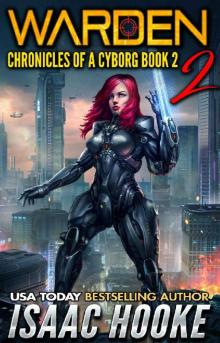 Warden 2
Warden 2 Devastator
Devastator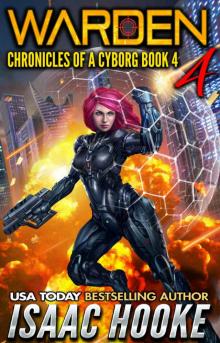 Warden 4
Warden 4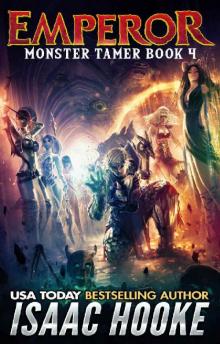 Emperor
Emperor Mech
Mech Conqueror
Conqueror Fighter
Fighter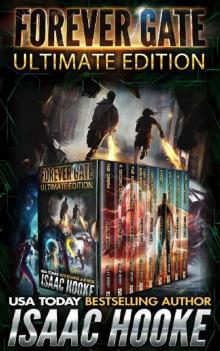 The Forever Gate Ultimate Edition
The Forever Gate Ultimate Edition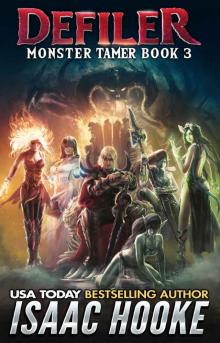 Defiler
Defiler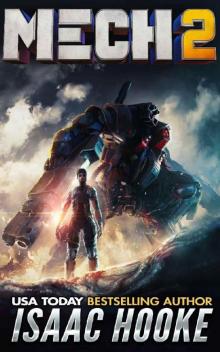 Mech 2
Mech 2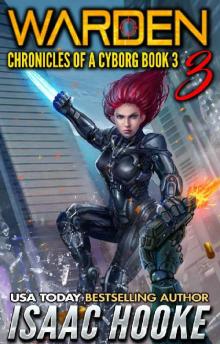 Warden 3
Warden 3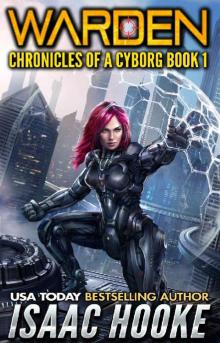 Warden 1
Warden 1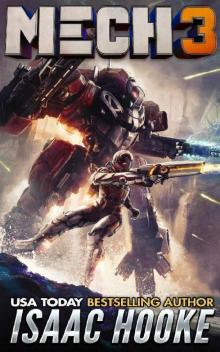 Mech 3
Mech 3 Forerunner
Forerunner The Alliance (AI Empire Book 2)
The Alliance (AI Empire Book 2)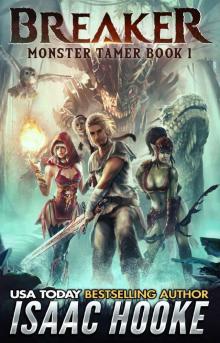 Breaker (Monster Tamer Book 1)
Breaker (Monster Tamer Book 1) Bender of Worlds
Bender of Worlds The Pendulum Swings (The Forever Gate Book 8)
The Pendulum Swings (The Forever Gate Book 8)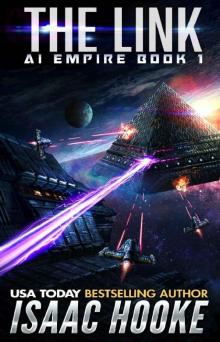 The Link
The Link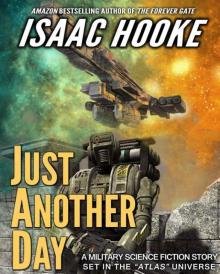 Just Another Day
Just Another Day Star Warrior
Star Warrior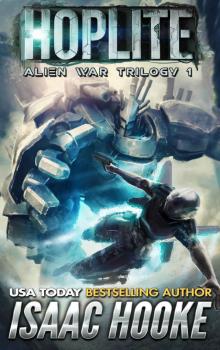 Alien War Trilogy 1: Hoplite
Alien War Trilogy 1: Hoplite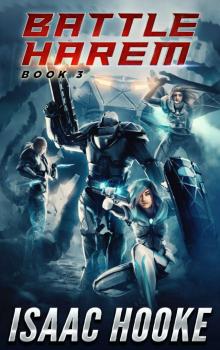 Battle Harem 3
Battle Harem 3 The Ethan Galaal Series: Books 1 - 3
The Ethan Galaal Series: Books 1 - 3 Reloaded
Reloaded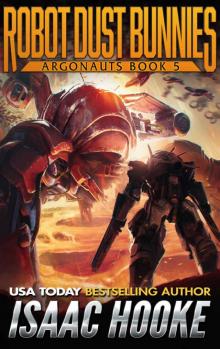 Robot Dust Bunnies (Argonauts Book 5)
Robot Dust Bunnies (Argonauts Book 5) Battle Harem
Battle Harem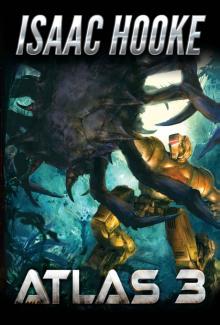 ATLAS 3 (ATLAS Series Book 3)
ATLAS 3 (ATLAS Series Book 3) Argonauts 2: You Are Prey
Argonauts 2: You Are Prey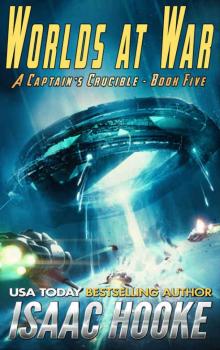 Worlds at War (A Captain's Crucible Book 5)
Worlds at War (A Captain's Crucible Book 5)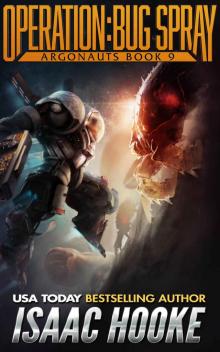 Operation: Bug Spray (Argonauts Book 9)
Operation: Bug Spray (Argonauts Book 9)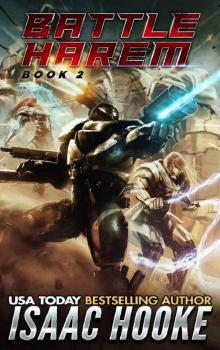 Battle Harem 2
Battle Harem 2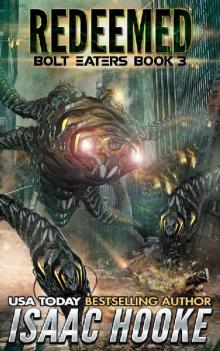 Redeemed (Bolt Eaters Trilogy Book 3)
Redeemed (Bolt Eaters Trilogy Book 3)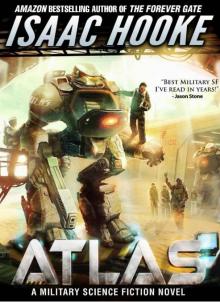 Atlas
Atlas Argonauts 1: Bug Hunt
Argonauts 1: Bug Hunt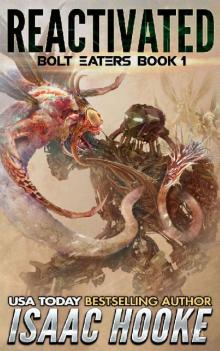 Reactivated (Bolt Eaters Trilogy Book 1)
Reactivated (Bolt Eaters Trilogy Book 1)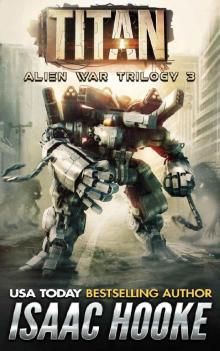 Alien War Trilogy 3: Titan
Alien War Trilogy 3: Titan Flagship (A Captain's Crucible #1)
Flagship (A Captain's Crucible #1)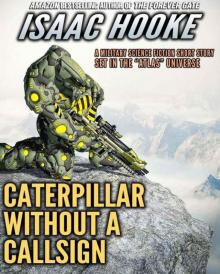 Caterpillar Without A Callsign
Caterpillar Without A Callsign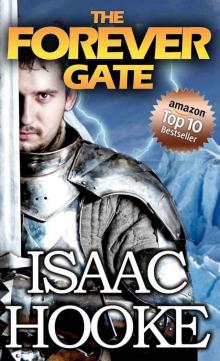 The Forever Gate
The Forever Gate He Who Crosses Death (Star Warrior Quadrilogy Book 3)
He Who Crosses Death (Star Warrior Quadrilogy Book 3)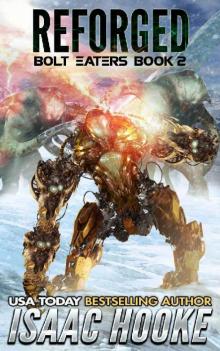 Reforged (Bolt Eaters Trilogy Book 2)
Reforged (Bolt Eaters Trilogy Book 2) Refurbished
Refurbished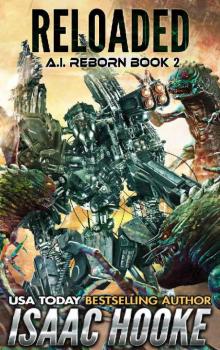 Reloaded (AI Reborn Trilogy Book 2)
Reloaded (AI Reborn Trilogy Book 2) He Who Crosses Death
He Who Crosses Death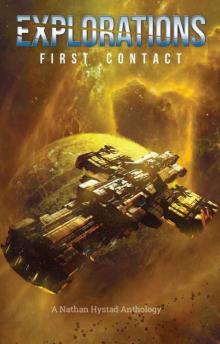 Explorations: First Contact
Explorations: First Contact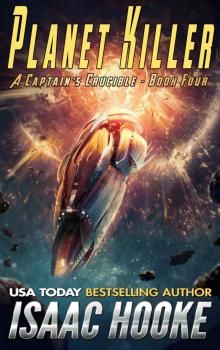 Planet Killer (A Captain's Crucible Book 4)
Planet Killer (A Captain's Crucible Book 4)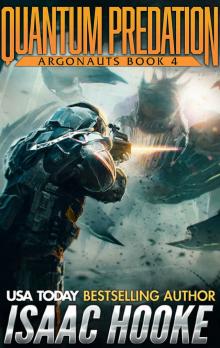 Quantum Predation (Argonauts Book 4)
Quantum Predation (Argonauts Book 4) Clandestine-IsaacHooke-FreeFollowup
Clandestine-IsaacHooke-FreeFollowup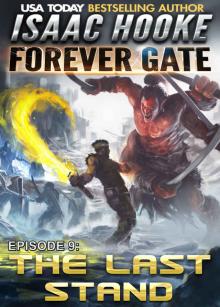 The Last Stand (The Forever Gate Book 9)
The Last Stand (The Forever Gate Book 9)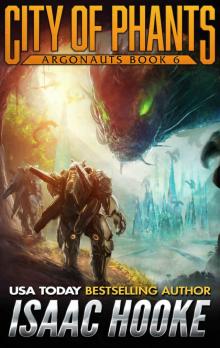 City of Phants (Argonauts Book 6)
City of Phants (Argonauts Book 6) Test of Mettle (A Captain's Crucible Book 2)
Test of Mettle (A Captain's Crucible Book 2)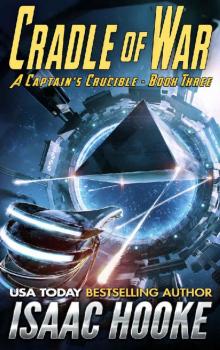 Cradle of War (A Captain's Crucible Book 3)
Cradle of War (A Captain's Crucible Book 3)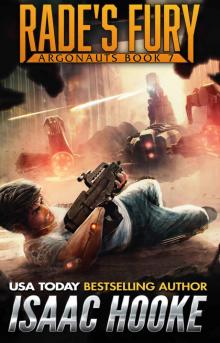 Rade's Fury (Argonauts Book 7)
Rade's Fury (Argonauts Book 7) Rebirth (The Forever Gate Book 6)
Rebirth (The Forever Gate Book 6) The Forever Gate Compendium Edition
The Forever Gate Compendium Edition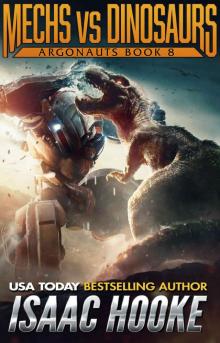 Mechs vs. Dinosaurs (Argonauts Book 8)
Mechs vs. Dinosaurs (Argonauts Book 8)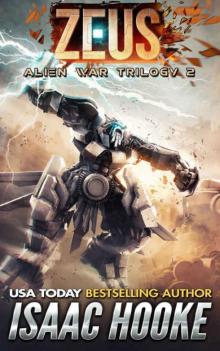 Alien War Trilogy 2: Zeus
Alien War Trilogy 2: Zeus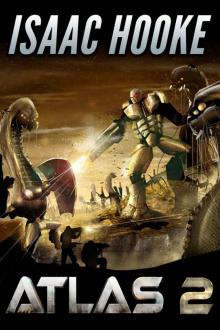 ATLAS 2 (ATLAS Series Book 2)
ATLAS 2 (ATLAS Series Book 2) Operation_Bug Spray
Operation_Bug Spray